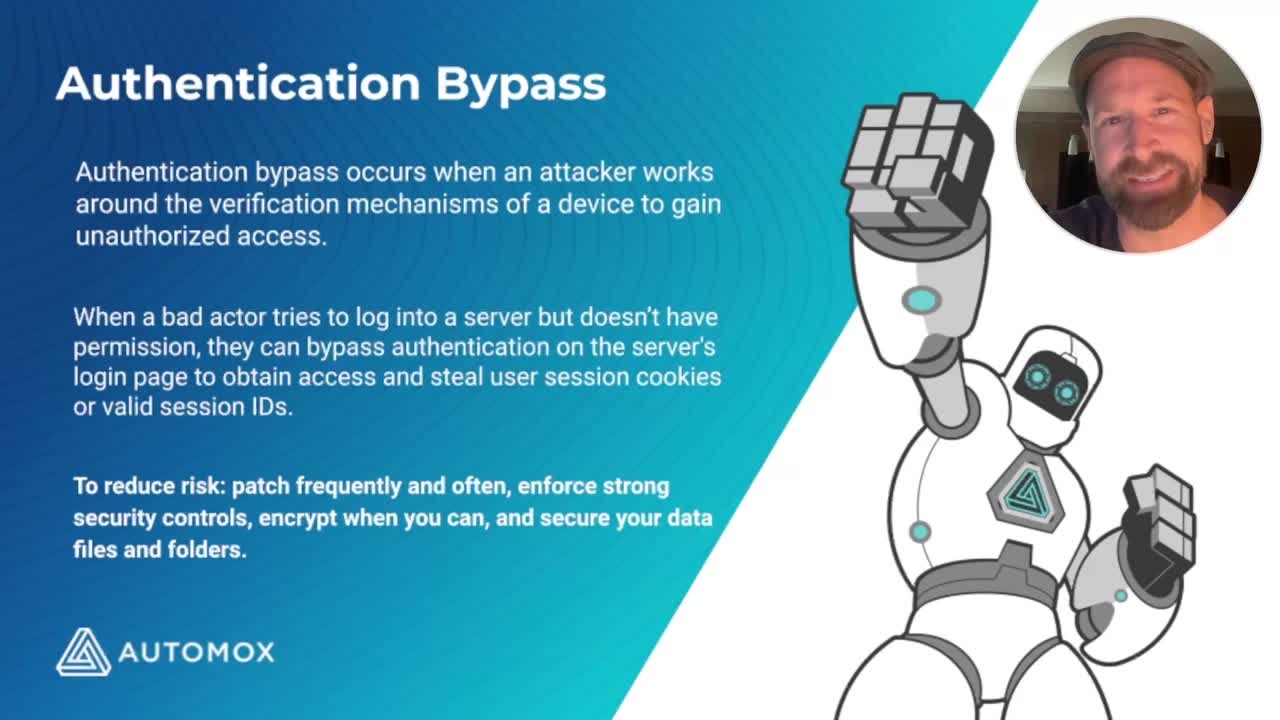Authentication and access controls play a crucial role in web application and system security. If these controls are weak or inconsistent, it can create a vulnerability threat actors can easily exploit via an authentication bypass.
What is authentication bypass?
An authentication bypass vulnerability occurs when an attacker bypasses the authentication mechanisms of a device to gain unauthorized access. It can happen when an application fails to verify the identity of a user before granting access.
According to the Common Attack Pattern Enumeration and Classification (CAPEC™), an attacker gains access, similar to an authenticated user, without going through the authentication process. They further state that “this is usually the result of the attacker using an unexpected access procedure that does not go through the proper checkpoints where authentication should occur.”

Click on the video for a mini tutorial.
How does authentication bypass work?
For many users, a simple example of an authentication bypass is when a bad actor accesses an application with another user's credentials, such as their email address and password. If multi-factor authentication is not installed, anyone can access that application with just those credentials. However, attackers have gotten savvy in exploiting applications with even more security authentication controls in place.
The vulnerability exploited is technically a weakness in the design of an application that allows an attacker to authenticate and escalate privileges without proper credentials.
In some cases, these vulnerabilities are used by attackers to gain unauthorized access to systems or data. For example, suppose someone attempts to log into a server but does not have permission granted by an administrator. In that case, they could use an authentication bypass vulnerability on that server's login page to obtain unauthorized access.
Attackers can also use this exploit by bypassing the authentication process to steal user session cookies or valid session IDs. For example, the attacker can create a legitimate admin session with the ‘username=admin’ cookie in the HTTP request code. Once accessed, they can download harmful firmware and modify the system settings.
Key examples of authentication bypass:
VMWare (CVE-2022 -22956)
Moxa (CVE-2021-40390)
Agentflow (CVE-2022-39037)
Sage X3 (CVE-2020-7388)
RAVA (CVE-2022-39058)
Impact of authentication bypass
Authentication bypass is one of the most common security threats that can compromise data integrity. There can be several damaging effects that might occur with an authentication bypass vulnerability.
Here are some of the most common types of impact when attackers use authentication bypass to compromise user access control and steal data:
Data theft from unauthorized parties
Risk of data loss when attackers steal or destroy information stored on a device or server
Data corruption that allows unauthorized users to change information stored in the system
Data manipulation in which malicious actors may infiltrate a system and alter the input information before it’s stored in memory
How to mitigate authentication bypass vulnerabilities
Authentication bypass vulnerabilities are primarily a result of weak authentication mechanisms. We suggest the following efforts and tasks for the fastest path to bypassing these vulnerabilities in your org:
1. Patch frequently and often.
Keep your apps and servers up to date with the latest updates to block attackers, stopping them in their tracks.
2. Enforce strong security controls.
Setting stringent access policies and authentication enforcements such as multi-factor authentication (MFA) can immediately block bad actors’ access.
3. Encrypt where and when you can.
From user session IDs to cookies, enabling encryption can ruin an attacker’s day (which is what we’re going for).
4. Secure your data files and folders.
As many apps and servers default to unsecured states, ensure you update and secure them asap with robust passwords.
Fight the good fight against malicious actors
Finally, when dealing with bad actors, we must stay vigilant. Criminals don’t take breaks. They use every opportunity to exploit vulnerabilities. Similarly, we can’t let our guard down. So, triple-check that your access controls are stringent and continually up-to-date.







)
)
